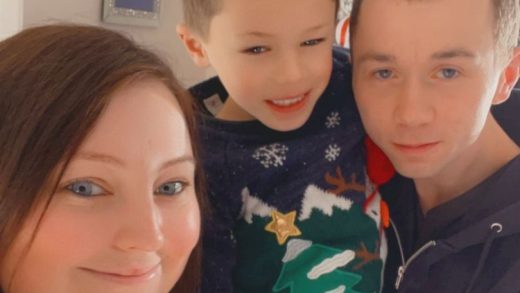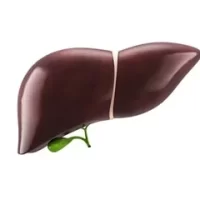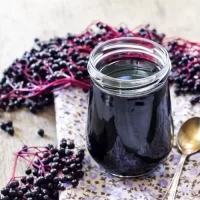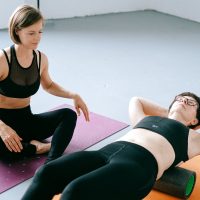Mark Taylor*, a lawyer based in Pennsylvania, feels a distinct negative shift in his mood during the winter months. These winter blues may be only a mild inconvenience for some, but many people feel the onset of depression, fatigue, and the need to withdraw from social situations during this darker, colder time. These tendencies are symptoms of a condition called Seasonal Affective Disorder, or SAD.
“I have never been formally diagnosed with SAD, but I feel that I do suffer from it, and have since before I knew it was a diagnosable condition,” says Taylor.
Many different parts of the world experience long, cold winters, and millions of people suffer from SAD. SAD affects about one to two percent of the population and usually runs in families. Women are more likely than men and young people more likely than older adults to develop the condition. The good news? SAD is treatable.
Light Therapy Can Alleviate Seasonal Affective Disorder Symptoms Within 3-4 Days
“SAD is caused by lack of light, so it’s not surprising that the main treatment for SAD is bright light,” says Helen Hanson, chair of SADA, The Seasonal Affective Disorder Association, based in the UK.
You may be wondering: how does light therapy work? Light treatment is sitting in front of a “SAD Lamp,” or lightbox, for up to 90 minutes daily. Most people respond within 3-4 days of initiating the treatment.
SAD lights are a great option, but natural light is always better. Try to incorporate natural light into your routine during winter months, if possible. Taking daily 30-minute walks is a significant small step to round-out your SAD treatment.
Nutrient-Rich Foods and Vitamin D Supplements Can Help Treat Seasonal Affective Disorder Symptoms

For people suffering from Seasonal Affective Disorder, the neurotransmitter serotonin levels are lower. Omega-3 fatty acids and vitamin D boost serotonin synthesis and action, thus improving brain function, according to The FASEB Journal. Try eating fish and other seafood, which have high amounts of omega-3 fatty acids. Flaxseeds are also an excellent source of omega-3.
Another effective treatment for SAD is vitamin D, according to a study in the Journal of Nutrition. When ultraviolet B rays are absorbed by the skin, the body produces vitamin D. When you get less sunlight, the amount of UVB exposure also decreases, leading to a drop in vitamin D levels.
SAD is seen in almost all parts of the world.
“[Whenever] temperatures plummet, I feel lethargic. I force myself to get active and go to work every day,” says Srinadh Addada, a community pharmacist based in Qatar.
Vitamin D supplements are common, even in a sunny desert region like Qatar, which is also close to the equator.
The situation is similar in Delhi, the capital of India, where temperatures drop to less than 50oF during winter.
“Consuming foods that contain vitamin D and omega 3 fatty acids like walnuts, soy, milk [and] spinach can help beat the sluggish mood during winter,” says Shivani Misri Sadhoo, a psychologist and counselor in Delhi.
Exercise Enhances Mood and Should Be Part Of Your Seasonal Affective Disorder Treatment
Physical activity during daylight hours will help improve your mood and promote feelings of well-being. Find a way to keep active even during the winter months. Aim to be active for just 30 minutes a day to start.
The New Hampshire Department of Health and Human Services suggests some activities to try during winter:
- Walk for 30 minutes during your lunch-break or break it up into 10-minute walks around the office, three times a day.
- Play sports or tag with your family, build a snowman, snowboard, ski, or look for animal tracks in the snow.
- Go to the gym or a workout class for a quick boost of energy.
- Try skating and swimming if you have access to an indoor skating rink or a swimming pool.
- If it’s too cold to step outside, turn on some music and dance.
- Do your household chores – clean the house, vacuum or do laundry.
Cold weather may bring your spirits down but remember that you can continue to lead an active life. Consider the winter to be an opportunity to try a new routine or hobby. If you’re proactive, you won’t have to wait to start feeling better.
Cognitive Behavioral Therapy (CBT) Can Be a Long-Term Seasonal Affective Disorder Solution
Cognitive Behavior Therapy could be one of the best forms of treatment for SAD. It’s superior to light therapy in treating SAD, according to a study by Dr. Kelly Rohan, Professor of Psychology at the University of Vermont. CBT involves working with a therapist to create cognitive (how you think about things) and behavioral changes in your daily life.
You might also consider practicing more positive thinking on your own. Seek out healthy activities to include in your daily routine. Choose actions that bring you joy. Some examples include:
- Join a team sport
- Create art: paint, write poetry or make a scrapbook
- Cook a new recipe
- Volunteer at your local community center or for a cause you believe in
- Learn a new skill like how to play an instrument or a new language
- Join a local dance class, book club or other meet-up
- Get a massage
- Visit and spend time with loved ones
- Write letters to your loved ones expressing gratitude, or write daily in a gratitude journal
Please consult a psychologist if you or someone you know is suffering from severe depression.












